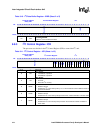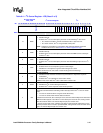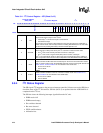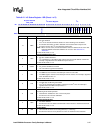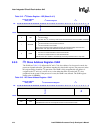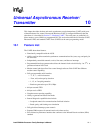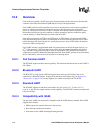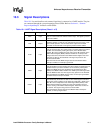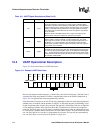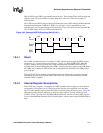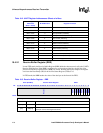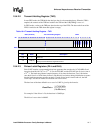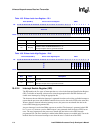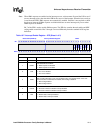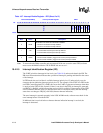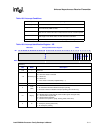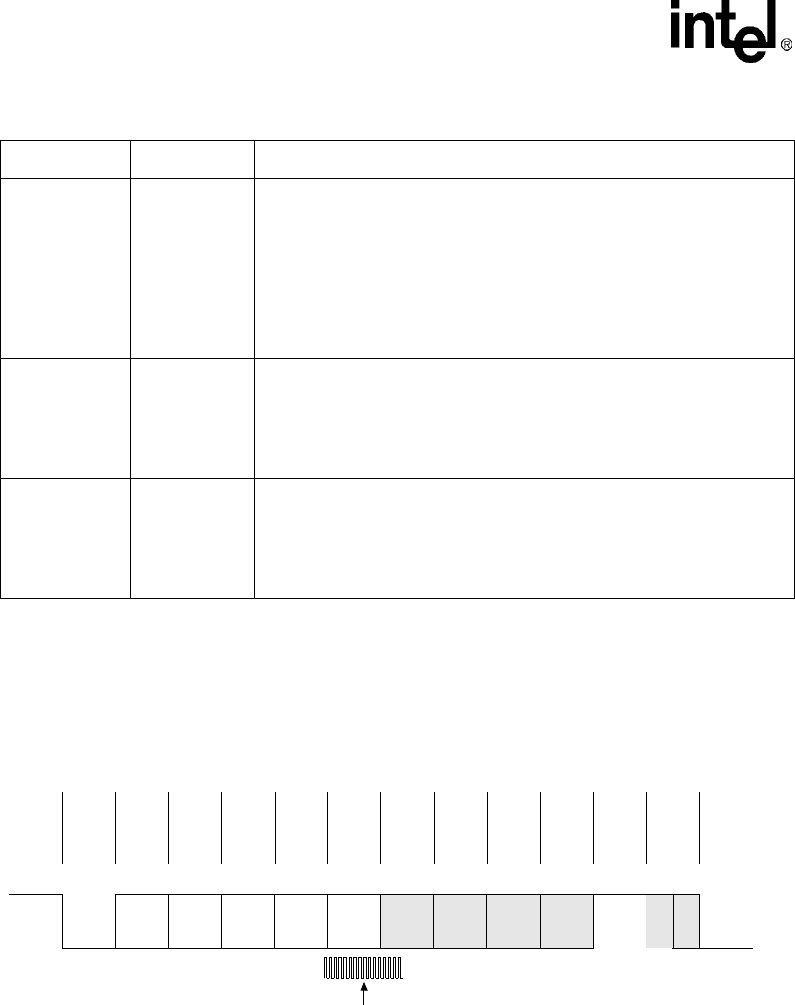
10-4 Intel® PXA26x Processor Family Developer’s Manual
Universal Asynchronous Receiver/Transmitter
10.4 UART Operational Description
Figure 10-1 shows the format of a UART data frame.
Figure 10-1. Example UART Data Frame
Receive data sample counter frequency is 16 times the value of the bit frequency. The 16X clock is
created by the baud rate generator. Each bit is sampled three times in the middle. Shaded bits in
Figure 10-1 are optional and can be programmed by software.
Each data frame is between seven and 12 bits long, depending on the size of the data programmed,
whether parity is enabled, and the number of stop bits. A data frame begins by transmitting a start
bit that is represented by a high to low transition. The start bit is followed by from five to eight bits
of data that begin with the least significant bit (LSB). The data bits are followed by an optional
parity bit. The parity bit is set if even parity is enabled and the data byte has an odd number of ones
or if odd parity is enabled and the data byte has an even number of ones. The data frame ends with
one, one and a half or two stop bits, as programmed by software. The stop bits are represented by
one, one and a half, or two successive bit periods of a logic one.
nRI Input
RING INDICATOR – When low, indicates that the modem or data set has
received a telephone ringing signal. The nRI signal is a Modem Status
input whose condition can be tested by reading Bit 6 (RI) of the MSR. Bit 6
is the complement of the nRI signal. Bit 2, the trailing edge of ring indicator
(TERI), of the MSR indicates whether the nRI input signal has changed
from low to high since the MSR was last read. This signal is only present
on the FFUART.
When the RI bit of the MSR changes from a high to low state and the
Modem Status interrupt is enabled, an interrupt is generated.
nDTR Output
DATA TERMINAL READY – When low, signals the modem or the data set
that the UART is ready to establish a communications link. The nDTR
output signal can be set to an active low by programming Bit 0 (DTR) of
the MSR to a 1. A Reset operation sets this signal to its inactive state.
LOOP mode operation holds this signal in its inactive state. This signal is
only present on the FFUART.
nRTS Output
REQUEST TO SEND – When low, signals the modem or the data set that
the UART is ready to exchange data. The nRTS output signal can be set to
an active low by programming Bit 1 (RTS) of the Modem Control Register
to a 1. A Reset operation sets this signal to its inactive (high) state. LOOP
mode operation holds this signal in its inactive state. This signal is used by
the FFUART and BTUART.
Table 10-1. UART Signal Descriptions (Sheet 2 of 2)
Name Type Description
Start
Bit
Data
<0>
Data
<1>
Data
<2>
Data
<3>
Data
<4>
Data
<5>
Data
<6>
Data
<7>
Parit
y
Bit
Stop
Bit 1
Stop
Bit 2
TXD or RXD pin
LSB
MSB



